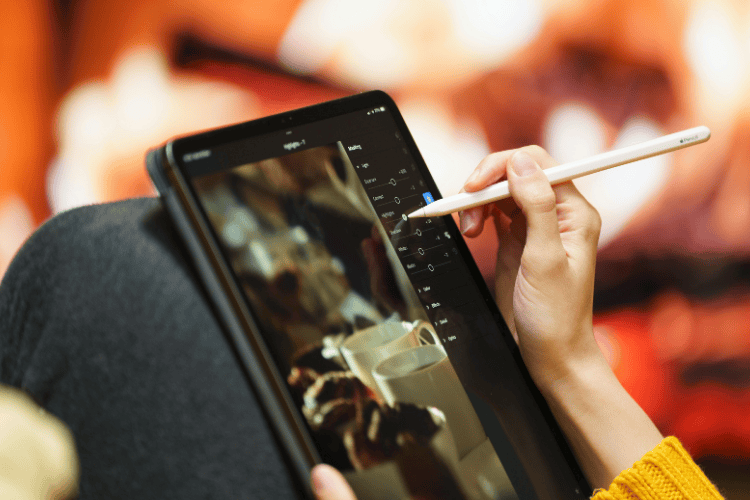In today’s fast-paced, tech-driven world, we find ourselves surrounded by sleek devices, clean interfaces, and simplified designs. Minimalism in design has become a defining principle in both technology and art, and its influence is only growing stronger as our digital lives continue to expand.
From the interface of the devices we use daily to the aesthetic choices in art and home decor, minimalism is revolutionizing how we perceive beauty and function.
The intersection of technology and art is no longer confined to a single discipline. It’s a fusion that speaks to our desire for simplicity and efficiency in every aspect of our lives.
The Rise of Minimalism in Design
Minimalism has long been associated with simplicity, clean lines, and functionality, making it a natural fit for both digital innovation and modern art.
In the tech world, minimalism has become a cornerstone of design philosophy. The emphasis is on reducing visual clutter, offering a design that feels intuitive and sophisticated.
The same principles apply to art. Minimalist art, with its focus on simplicity, has captured the imagination of artists and collectors alike.
Brands like https://thegoatwallart.com/ strip away unnecessary elements, making their minimalist art an aesthetic that is both calming and stimulating. The beauty lies in the restraint; the pieces invite the viewer to engage with them more deeply, focusing on the essentials of shape, form, and color.
Minimalism in Technology: Streamlining the Digital Experience
At the heart of digital minimalism is the desire to make technology more accessible, less distracting, and easier to use. In UI/UX design, for example, minimalist principles are applied to create user interfaces that prioritize clarity and functionality.
Think of the clean design of a website or the intuitive layout of an app. The trend toward flat design, characterized by bold colors, simple shapes, and a focus on usability, is a direct reflection of minimalism in technology.
As technology continues to evolve, designers are continually refining interfaces to ensure they are as clean, simple, and user-friendly as possible. This trend is also apparent in the growing emphasis on voice and gesture-based interfaces, which eliminate the need for physical buttons and streamline interactions.
This obsession with simplicity and clarity in technology mirrors the same trends in visual art. Minimalist artists are pushing boundaries by using basic forms, limited color palettes, and clean lines to convey complex ideas and emotions.
The clean aesthetic of minimalist art offers a contrast to the overwhelming sensory experiences that technology can sometimes create.
The Evolution of Digital Art: From Pixels to Perfection
With the advent of digital technology, art itself has transformed. The boundary between traditional and digital art has blurred, creating new opportunities for artists to express themselves creatively.
Digital art allows for limitless creativity, but within this expansive field, many artists are embracing minimalism as their primary style. Using digital tools, artists can manipulate pixels, vectors, and colors to create visually striking yet simple compositions.
In fact, digital minimalism has become a recognizable art movement in its own right. Artists are using software like Adobe Illustrator or Procreate to create sleek, bold designs that are defined by their simplicity.
These pieces often feature geometric shapes, sparse color schemes, and a focus on negative space, which are all key principles of minimalist art.
Minimalist Art and Its Role in Modern Spaces
As technology and art continue to intersect, the way we decorate our homes and workspaces is evolving. The minimalist aesthetic has found a natural home in modern interiors, where clean lines and uncluttered spaces are preferred. The influence of digital design is evident in how minimalist artwork is used to enhance contemporary spaces.
In modern homes, minimalist art serves as both a visual centerpiece and a complementary element to the overall design. Whether it’s a bold, abstract piece or a subtle line drawing, minimalist art brings a sense of calm and sophistication to any room.
For tech enthusiasts and digital professionals, incorporating minimalist artwork into their spaces can create a harmonious environment that reflects both their aesthetic preferences and their lifestyle.
If you’re interested in discovering minimalist art that suits your modern decor, take a look at collections that offer sleek, contemporary designs that blend effortlessly into tech-inspired spaces.
A reputable brand like Goat Wall Art offers a range of minimalist pieces that are perfect for those who appreciate clean, digital-inspired aesthetics in their homes or offices.
Tech-Inspired Art: A New Frontier for Minimalism
Looking ahead, the future of minimalist art is closely tied to the ongoing advancements in digital technology. As we continue to embrace the digital world, art will undoubtedly continue to evolve in exciting new directions.
Augmented reality (AR) and virtual reality (VR) are just two of the technologies that are set to change the way we experience art. These innovations allow for immersive, interactive experiences that offer new ways to engage with minimalist art.
In fact, digital art trends suggest that more artists will experiment with mixed media, incorporating digital technology with traditional artistic methods.
For example, we might see physical minimalist pieces integrated with AR components, allowing the viewer to experience the artwork in a dynamic, interactive way. This fusion of tech and art will continue to push the boundaries of what minimalist art can be, creating a whole new frontier for artistic expression.
Final Thoughts
The intersection of technology and art is a dynamic, ever-evolving space where minimalism plays a central role. As digital technology continues to shape our world, it’s only natural that its influence will be seen in the world of art.
Minimalism, with its clean lines, simplicity, and functionality, is the perfect aesthetic to represent the streamlined nature of modern digital products.
If you’re looking to bring the elegance of minimalist art into your home or workspace, be sure to explore minimalist collections like those from The Goat Wall Art.
Their carefully curated pieces embody the perfect blend of modern art and digital-inspired design, making them an ideal choice for those seeking to create a contemporary, tech-inspired living space.

